Museums & Institutions
When the Frick Reopens, This Rare Masterpiece Will Welcome the Collection Home
The museum sent its treasures to its temporary Madison Avenue home—but 'Diana' had to stay behind.
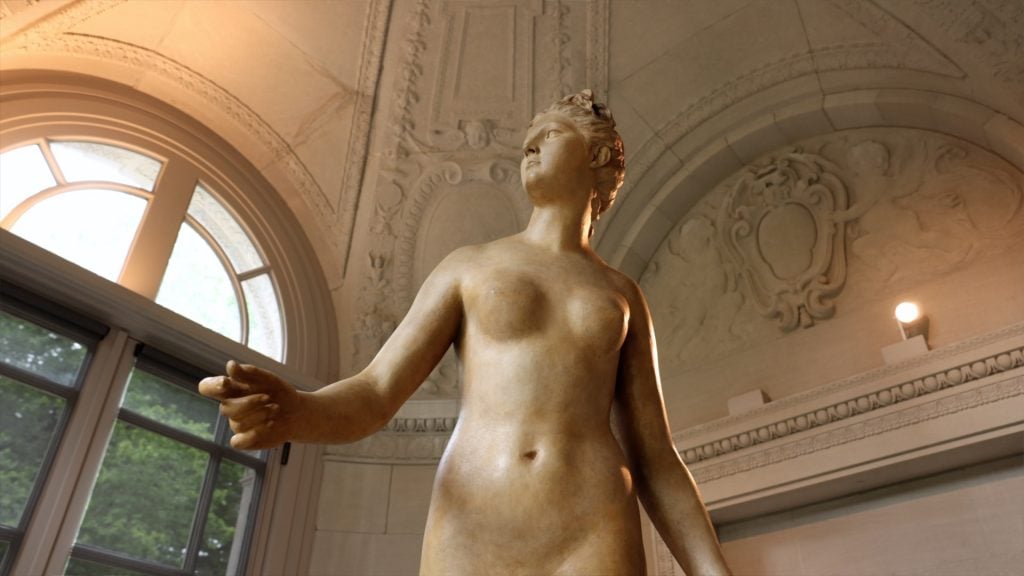
The museum sent its treasures to its temporary Madison Avenue home—but 'Diana' had to stay behind.

Sarah Cascone

The Frick Collection has been closed for over four years during an ambitious expansion of its Upper East Side mansion. For much of that time, the jewels of the collection moved five blocks north to the Breuer building, temporarily christened Frick Madison—and then there is Diana the Huntress, the statue so delicate she never left.
The museum couldn’t risk damaging Diana, who measures over six feet tall, by moving her offsite. Instead, it worked around her.
“Our conservation team and art handlers created this box where she was crated for a little more than four years,” Giulio Dalvit, the Frick’s associate curator of sculpture, said in the museum’s “Renovation Stories” YouTube series. “There was a vibration monitor on the top of her head to make sure that she was not put in any kind of danger during the renovation.”
The sculpture, representing the Roman goddess of hunting, is by renowned 18th-century sculptor Jean-Antoine Houdon. (The French artist also sculpted George Washington during a visit with the president in 1875; the resulting bust is the basis for the portrait on the obverse of the quarter.)
The Frick purchased Diana from the famous dealer Joseph Duveen in 1939. It is the only version of the work that Houdon made in terracotta.
“There are bronze and marble versions in many other museums, but this is really the only one that survives in this incredibly fragile medium, which really makes it so special and so exceptional,” Dalvit said.
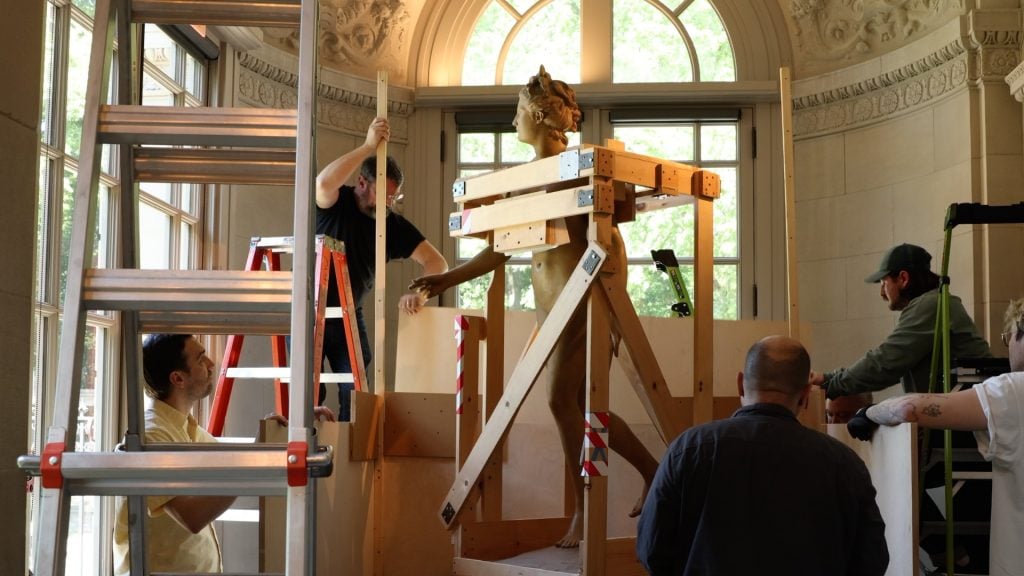
Still from “Unboxing Diana” an episode from the Frick’s “Renovation Stories” YouTube series. Photo courtesy of the Frick Collection, New York.
“Because it’s terracotta, technically she has to be made of 10 different sections that were fired separately and then were put together on a metal armature,” he added. “Sculpting something of this size in terracotta is, in itself, a technical wonder. The fact that she is then resting on the tiptoes of her left foot alone, all the weight of the sculpture is resting on that one single point, makes the sculpture incredibly fragile, which makes the survival of this Diana, of this version, so exceptional.”
Diana actually lives in what was the museum’s newest addition prior to the current construction project. In 2011, the architectural firm Davis Brody Bond enclosed a covered walkway from the original 1914 mansion by Carrère and Hastings to create the Portico Gallery.
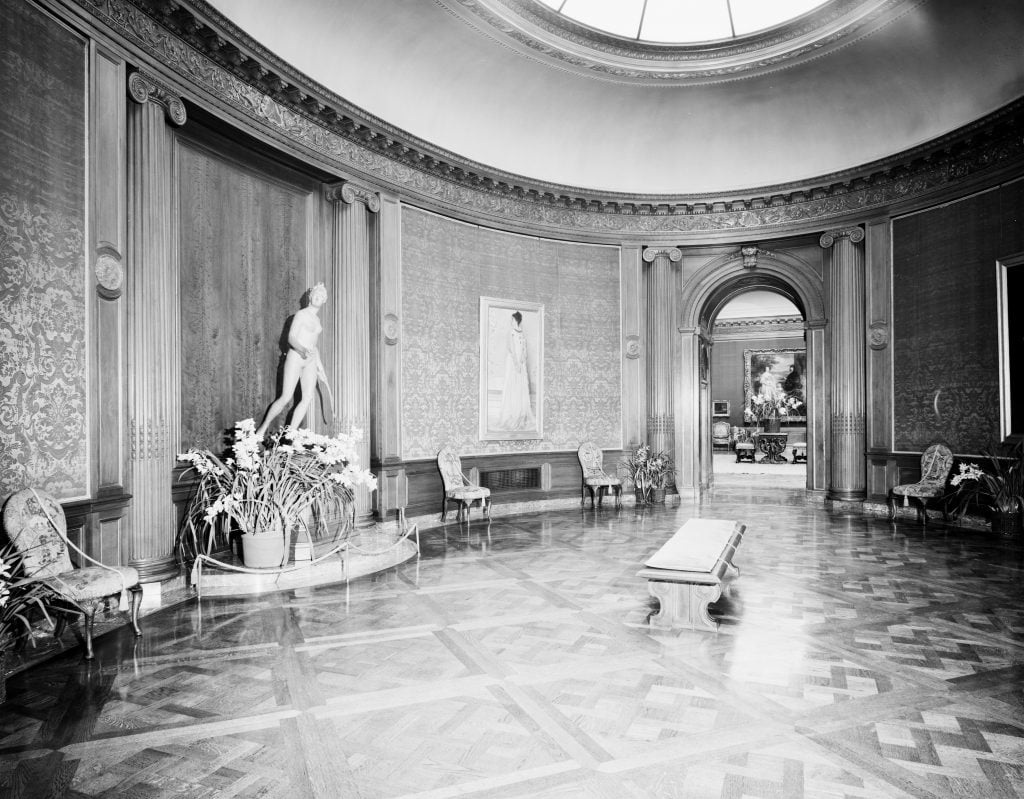
An archival photo of Diana the Huntress by Jean-Antoine Houdon in the Oval Room of the Frick Collection. Photo courtesy of the Frick Collection/Frick Art Research Library Archives, New York.
Before moving in there, Diana had been a fixture of the Frick’s Oval Room, built by John Russell Pope when the mansion became a museum in 1935. (The only time she ever left was for safekeeping in the vault during World War II.) And before that, Duveen kept her in storage.
“He had commissioned one of the great sculpture photographers of the early 20th century, Clarence Kennedy, to take wonderful pictures of it,” Dalvit said. “We still have a whole album of photographs that were taken at the time by Kennedy.”
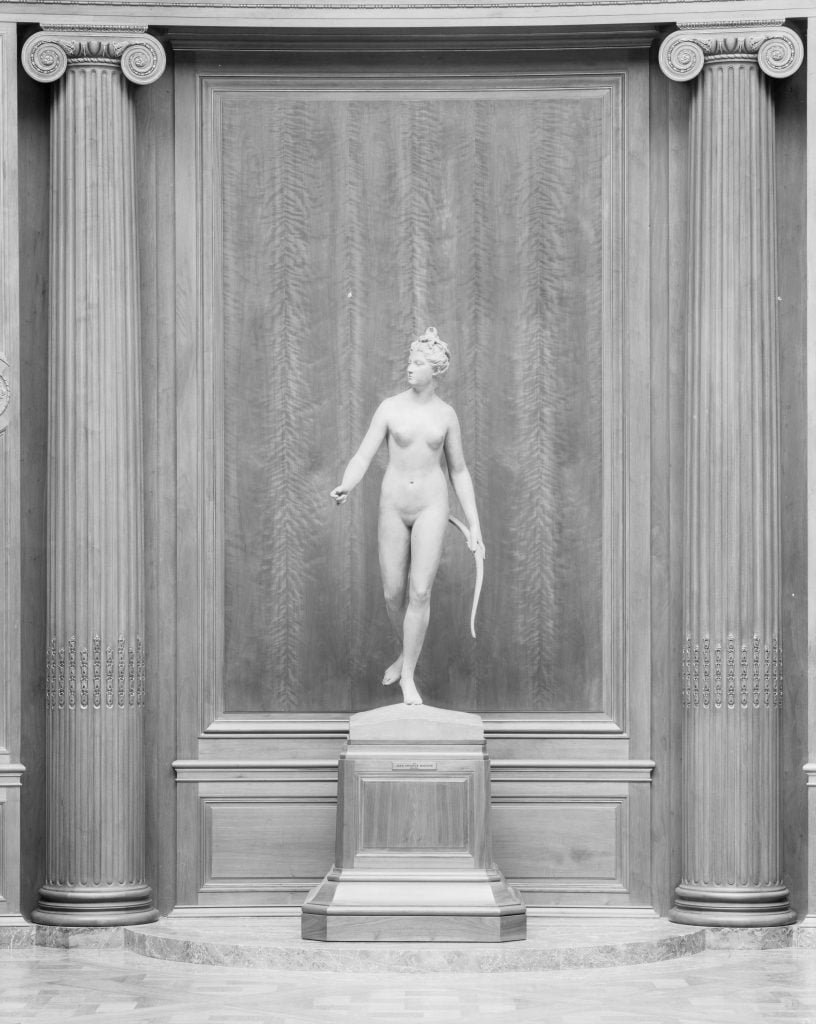
An archival photo of Diana the Huntress by Jean-Antoine Houdon. Photo courtesy of the Frick Collection/Frick Art Research Library Archives, New York.
The Frick actually has meticulous archives detailing the history not only of the collection, but of the building itself. Those records have been instrumental in helping guide the current expansion project, designed by Selldorf Architects.
For the first time, the museum will open its second floor, previously used as office space, to the public.
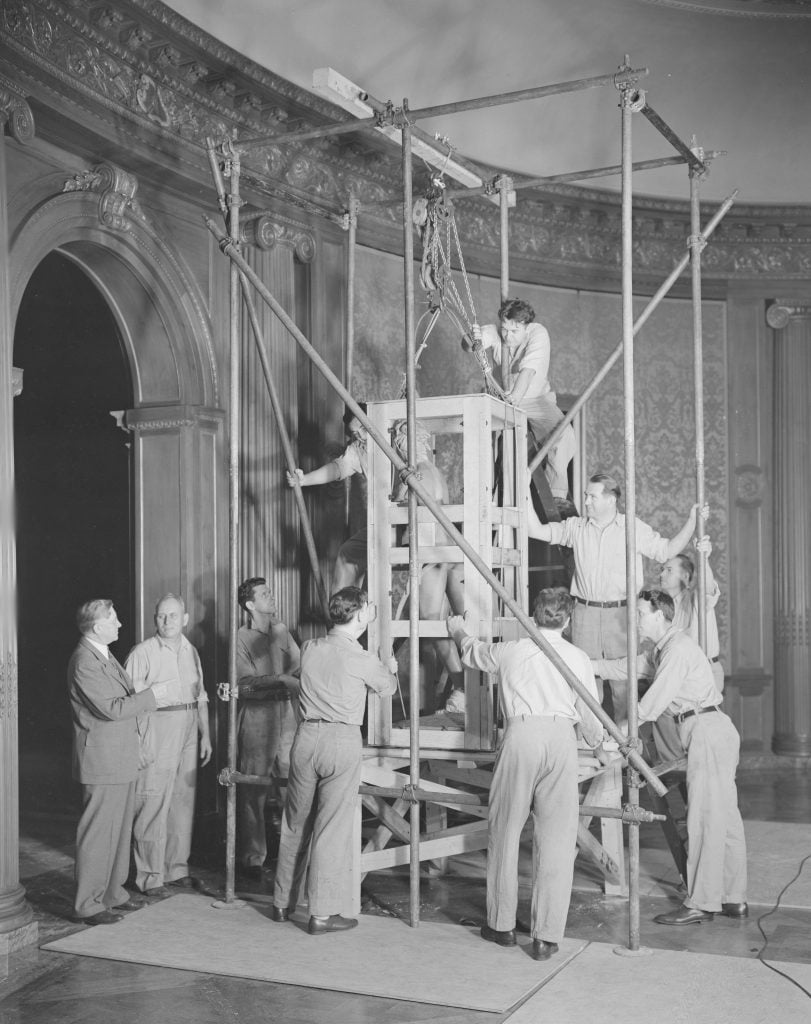
An archival photo of Diana the Huntress by Jean-Antoine Houdon in a crate in the Oval Room of the Frick Collection. Photo courtesy of the Frick Collection/Frick Art Research Library Archives, New York.
Thanks to photographs taken when the Fricks still lived in the space, it is possible to recreate many of the original furnishings, down to the textiles that once graced the walls.
Many of these carefully considered details are featured in the “Restoration Stories” series, launched in March and with new episodes released biweekly.
The shorts, which are narrated by museum curators and experts in conservation, offer an exciting preview of what to expect when the Frick finally reopens its doors.
The restoration videos follow the museum’s award-winning “Cocktails with a Curator” YouTube series. Pairing works from the Frick collection with themed cocktails, the series became a massive hit with digital audiences all around the world when lockdowns forced the institution to shutter in March 2020. (It later turned into a book.)
The mansion has remained closed ever since—but reopening is finally on the horizon, some time in early 2025. To fund the expansion, the Frick has been conducting a $290 million capital campaign. To date, it’s raised $253 million, or 87 percent of the goal.
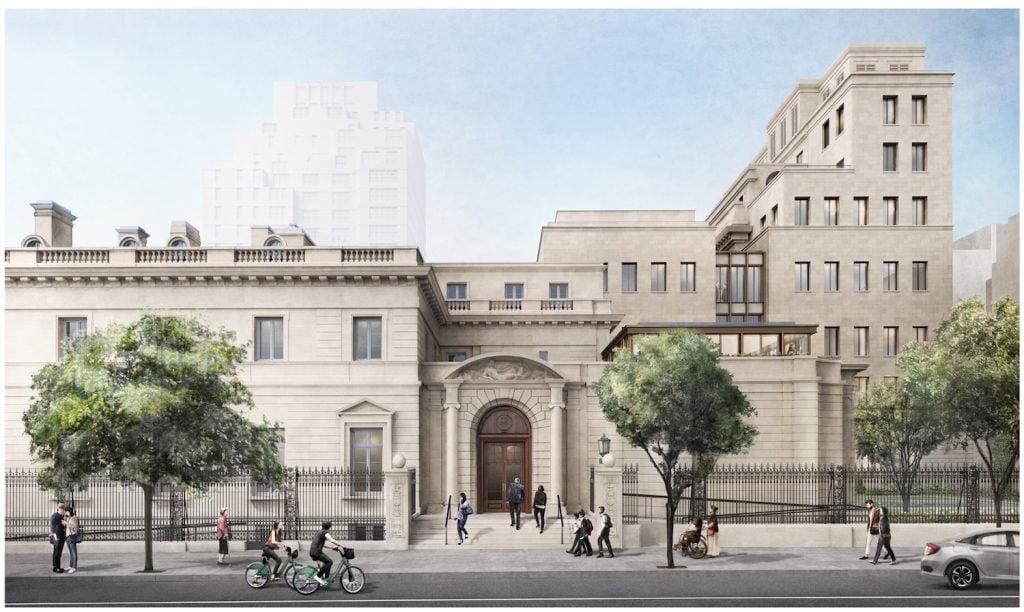
Rendering of the Frick Collection from 70th Street. Image courtesy of Selldorf Architects.
To see the renovation project finally approaching the finish line is all the more remarkable given how long it took just to get plans for the expansion approved.
An initial Davis Brody Bond design came under fire from preservationists because it would have destroyed a Russell Page-designed garden. The final plan, which connects the main museum with the Frick Art Reference Library for the first time, opted to to retain the garden, using spaces that were largely already excavated beneath it for new education and program spaces, rather than building on top of it. (Instead, the museum’s circular music room, beloved by chamber music aficionados, became the main casualty.)
Safe within the confines of her box in the Portico Gallery, Diana has witnessed it all.
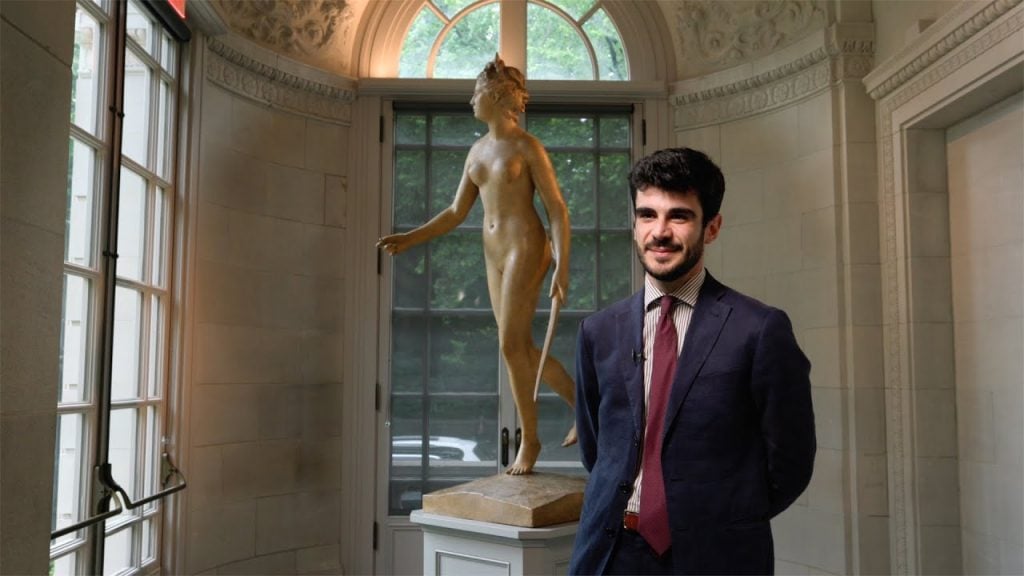
Giulio Dalvit, the Frick Collection’s associate curator of sculpture, with Diana the Huntress by Jean-Antoine Houdon. Photo by George Koelle, courtesy of the Frick Collection, New York.
“Recently, she was unboxed by our conservation team. It’s like when you set a creature that has been caged for so long free. I have the same feeling about this, almost like at night she could, you know, venture out unseen into the wildlife,” Dalvit said.
“It’s a very special place here at the Frick, overlooking the fabulous garden with the magnolias on Fifth Avenue,” he added. “I think she’s ready to witness them blooming again and the reopening of the Frick.”